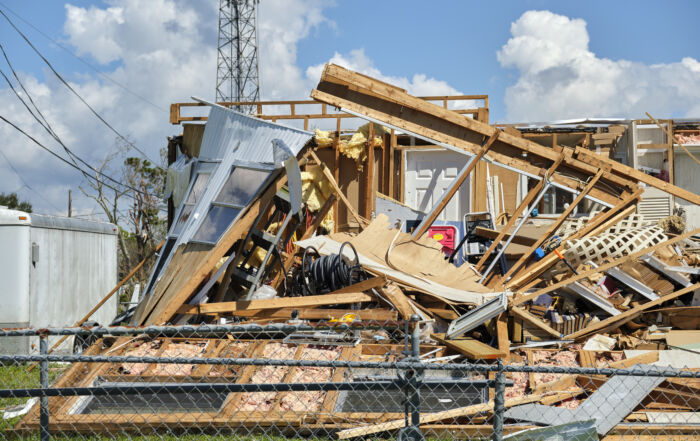Navigating a Power Outage in Your Foodservice Operation
In the Midwest this year, it seems storms are occurring weekly. Perhaps this is the norm, and I haven’t paid much attention in years’ past, but the frequency and intensity of the storms seems to be increasing. Along with these storms, power outages seem to follow. While I am sure you all would agree that foodservice management is no stranger to unexpected challenges, sudden power outages can be difficult to navigate.
With hundreds, if not thousands of dollars in perishable ingredients on hand in your foodservice operation, a loss of power can pose significant risks to both your business and your customers. However, with a solid plan and quick thinking, you can ensure that food safety remains a top priority, even when the lights go out. Below are some tips for foodservice operators on how to keep food safe during power outages.
Before an emergency ever occurs, ensure that all team members are aware of emergency protocols, including the location of fire exits and emergency supplies. If you haven’t taken the time to hold a pre-shift meeting about this topic with your staff, now is the time to do so! Make sure your staff know where emergency supplies such as flashlights or glowsticks are located.
Also, before it occurs, consider backup power options. During an outage is generally not the time to be exploring the purchase of a new generator. While such an investment can be costly, weigh the pros and cons for your situation. If you lose power for prolonged periods frequently, it may be a good investment that can save you from extensive losses during extended power outages.
When a situation does occur, first, and most importantly, stay calm and stay safe. In the chaos of an outage, the safety of your staff and customers should be paramount. We often discuss that nothing is so important that it can’t be done without food safety in mind, but in this case, there is absolutely nothing more important than the physical safety of your staff and customers.
Take time to do a cursory assessment of the situation. What is the cause and scope of the power outage? Is it localized or widespread? This information will help you make informed decisions about how to proceed.
While power outages may disrupt operations, a proactive approach to food safety can help you maintain your reputation and customer trust, while minimizing losses.
If it appears the power will not be coming back on immediately dispose of food that is in the process of being cooked but has not yet reached its final cooking temperature. While one might argue that you can quickly get it under refrigeration, adding warm food to a non-functional refrigerator will only cause the temperature in the unit to increase more quickly.
Food that has been in proper hot holding when the power went out can be kept for up to four hours until it must be disposed of. You do have the option to cool the food to 41 F or lower following the traditional cooling guidelines.
From a food safety perspective, one of the immediate concerns during a power outage is the temperature of refrigerated and frozen items. Keep refrigerator and freezer doors closed as much as possible to maintain the cold temperature. A closed refrigerator can keep food at a safe temperature for about four hours, while a closed freezer can maintain the temperature for up to 48 hours, depending on its fullness and insulation.
Start to monitor your cooler and freezer temperatures immediately. Don’t wait until it gets above a safe temperature. As long as refrigerated food was maintained at safe temperatures prior to the outage it can be kept for four hours, but the time can be extended to six hours as long as the food does not exceed F.
You could explore moving all food into one refrigeration or freezer unit to maximize the time at which you will be able to keep food at the proper temperature. But do be very cautious that you are not creating bigger issues with cross-contamination. Always remember property storage guidelines and keep raw foods away from ready to eat foods.
If it appears that the outage may be for an extended period, explore the possibility of donating food to first responders, especially if it is an emergency. Focus on using perishable items that are at risk of spoiling first.
In all of this, don’t forget to communicate to important stakeholders, including your customers, employees, and inspector. Your inspector is a valuable asset who can assist in ensuring the safety of food and helping you come up with a plan to minimize losses.
After the power is restored, be sure you are reopening in a safe manner. If food in refrigerators or freezers went past the point it could be saved, be sure to clean and sanitize the units thoroughly before bringing in new deliveries.
After you’ve reopened, take time to evaluate your response to the outage. What worked well? What could have been handled more effectively? Use this experience to refine your emergency standard operating procedures and enhance your preparedness for future challenges.
While power outages may disrupt operations, a proactive approach to food safety can help you maintain your reputation and customer trust, while minimizing losses. By focusing on temperature management and effective communication you can navigate these challenges with confidence and ensure that your customers continue to enjoy safe and delicious meals, even in the face of unexpected power disruptions. Risk nothing,
READ MORE POSTS
Ongoing Outbreaks: What We Can Learn from the Most Recent Carrot and Cucumber Outbreaks
Last month in our blog, we highlighted the recent E. Coli outbreak stemming from onions served [...]
The Hidden Dangers: Allergens in Your Foodservice Operation
It has been a while since we have addressed or discussed allergens in the blogs. In [...]
What Have We Already Learned from the Most Recent E. Coli Outbreak?
In late-September and peaking in very early-October, reports of increased Escherichia coli (E. coli) 0157:H7 cases [...]
Ensuring Food Safety in Emergency Foodservice Operations
As we were reminded earlier this month, emergencies can strike unexpectedly, whether due to natural disasters, [...]










